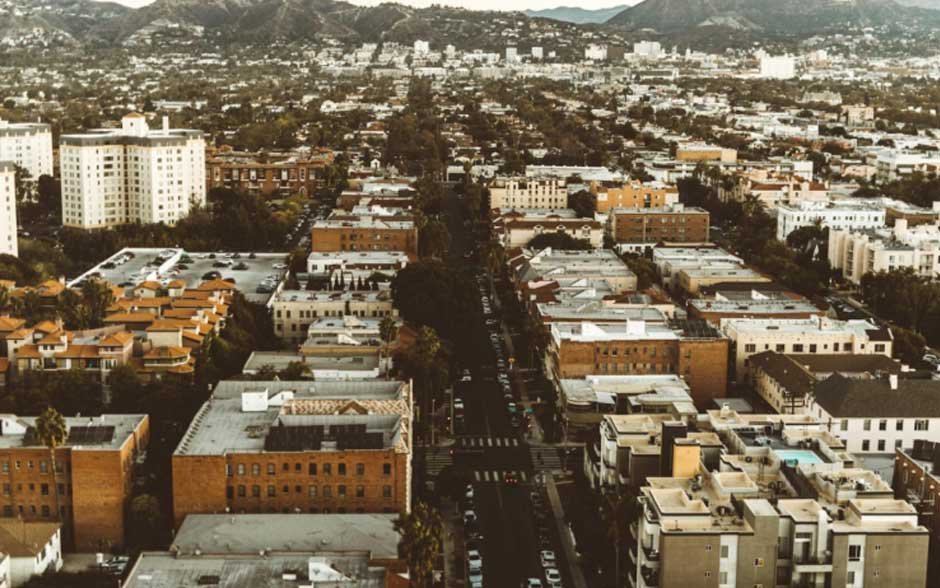Moving to a new city is both exciting and overwhelming. When the city in question is West Hollywood, you’re preparing for a lifestyle that’s colorful, fast-paced, creative, and highly desirable. Known affectionately as “WeHo,” this vibrant pocket of Los Angeles has become one of the most popular destinations for newcomers who want the perks of LA without losing the sense of community.
If you’re planning on moving to West Hollywood, this guide will help you understand what life here is really like. From neighborhoods and housing to cost of living, culture, and insider tips, we’ll cover everything you should know before packing your boxes.
Why West Hollywood Stands Out
Los Angeles is huge, with countless neighborhoods to choose from. So what makes West Hollywood special?
- Walkability:Unlike most of LA, West Hollywood is pedestrian-friendly. You can walk to restaurants, shops, bars, and even the grocery store.
- Inclusivity:WeHo has a well-earned reputation as one of the most progressive, welcoming communities in the country.
- Central Location:Nestled between Beverly Hills and Hollywood, West Hollywood puts you in the heart of Los Angeles.
- Lifestyle:The nightlife, fitness culture, and arts scene give residents plenty of ways to enjoy their time outside of work.
- Community:Despite its trendy vibe, WeHo feels like a small city where neighbors recognize one another.
It’s this unique combination that convinces thousands of people each year to move here instead of other parts of Los Angeles.
Neighborhoods of West Hollywood
WeHo isn’t big geographically, but each section of the city has a distinctive flavor. Picking the right area will make your move much more enjoyable.
Santa Monica Boulevard Corridor
This is the heart of West Hollywood, home to LGBTQ+ friendly spaces, restaurants, bars, and nightlife. If you want to be at the center of activity, this is the spot.
Norma Triangle
A quieter residential pocket with tree-lined streets, but still within walking distance of Santa Monica Boulevard. Perfect for those who want peace without isolation.
West Hollywood West
Located near Beverly Hills, this area is filled with stylish single-family homes and higher-end condos. Great for professionals who want a more residential feel.
Sunset Strip
Famous for music venues, billboards, and nightlife. If you’re young, energetic, and want to live where the action never stops, this might be for you.
Eastside (Fairfax / La Brea)
This area has become increasingly trendy with new apartment complexes, cafes, and access to The Grove shopping center.
Housing & Rental Market
Housing is one of the biggest factors in any move. West Hollywood is in high demand, which means higher-than-average rent and purchase prices.
- Studios:Around $2,000–$2,400 per month.
- One-bedroom apartments:$2,600–$3,200 per month.
- Two-bedrooms:Often start at $3,500 and can go higher depending on amenities.
- Condos:Begin at ~$700,000.
- Single-family homes:Usually $1.5M and above.
Parking is limited. Always check whether an apartment comes with designated parking. Many newcomers are surprised by permit rules and street-cleaning tickets.
Job Market & Economy in West Hollywood
While West Hollywood is relatively small, it’s surrounded by economic powerhouses, which makes it a prime location for professionals.
- Entertainment Industry:Proximity to Hollywood means many residents work in film, television, music, or media production. Casting agencies, production offices, and creative studios are scattered around WeHo and nearby.
- Hospitality & Tourism:Hotels, restaurants, and nightlife venues provide steady jobs. The Sunset Strip alone employs hundreds of service industry professionals.
- Design & Fashion:The West Hollywood Design District is a hub for interior designers, furniture showrooms, and high-end boutiques, attracting creative talent from across LA.
- Tech & Startups:Many tech professionals live in WeHo and commute to Culver City, Santa Monica, or Burbank, all within 20–40 minutes.
- Remote Work:With its trendy coffee shops and co-working spaces, WeHo is popular with freelancers and remote employees.
Tip: If you’re relocating for work, West Hollywood is well-connected to LA’s major employment centers — and being centrally located means you’re rarely more than 30–40 minutes away from key hubs like Downtown, Silicon Beach, or the Valley.
Cost of Living
Living in West Hollywood is not cheap. Beyond housing, here are other expenses to keep in mind:
- Utilities:Around $150–$250/month.
- Groceries:Expect to pay about 10–15% more than the national average. Whole Foods, Trader Joe’s, and boutique markets are nearby.
- Transportation:You may save on car costs if you walk or use rideshare, but gas and insurance in LA are high.
- Dining & Entertainment:Bars, concerts, and restaurants add up quickly. Budget for at least a few nights out each month.
- Fitness:Gym and studio memberships are common, often ranging $100–$200/month.
Many residents find the higher costs worthwhile because of the access to amenities and community perks.
Lifestyle & Culture
West Hollywood is more than just a place to live — it’s a lifestyle.
- Fitness-Oriented:From yoga to boutique gyms, staying active is part of daily life here.
- Pet-Friendly:Many apartments and cafes welcome dogs. The West Hollywood Dog Park is always buzzing.
- Events:Pride, the Halloween Carnaval, and film festivals are major highlights.
- Creative Scene:WeHo attracts artists, designers, and musicians. Inspiration is everywhere.
- Dining & Nightlife:Trendy restaurants and rooftop bars keep evenings lively.
Whether you’re into nightlife or quiet brunches, there’s a spot for you.
Shopping & Local Amenities
West Hollywood is known for its stylish shopping and convenient local amenities that make day-to-day life easier.
- West Hollywood Design District:A world-renowned destination for art galleries, furniture stores, and high-end home décor. Perfect for anyone decorating a new apartment or home.
- Melrose Avenue:Trendy boutiques, vintage shops, and streetwear stores draw both locals and tourists.
- Beverly Center:Just outside WeHo’s borders, this mall offers major brands, dining, and entertainment.
- Grocery Options:Whole Foods, Trader Joe’s, Pavilions, and Gelson’s are all nearby. Farmers markets, like the Melrose Place Farmers Market, are great for fresh produce.
- Fitness & Wellness:Equinox, Barry’s Bootcamp, and countless yoga and pilates studios are within walking distance.
- Everyday Essentials:Pharmacies, banks, and post offices are easily accessible throughout the city, adding convenience for new residents.
Insider Tip: If you’re shopping on Melrose, keep an eye out for celebrity sightings — it’s not unusual to see actors, musicians, or influencers at cafes and boutiques.
Transportation & Commuting
Unlike most of Los Angeles, you can actually get around West Hollywood without a car — but it depends on your lifestyle.
- Walking/Biking:Many errands can be done on foot or by bike.
- Public Transit:The Metro and bus systems are available but not as comprehensive as other cities.
- Rideshare:Uber and Lyft are reliable, often replacing the need for personal vehicles.
- Driving:Traffic is unavoidable, but you’ll appreciate being centrally located between Santa Monica, Downtown LA, and the Valley.
Preparing for the Move
Moving in LA has its own set of challenges:
- Declutter:Apartments are smaller than suburban homes, so bring only essentials.
- Parking Permits:Moving trucks often need permits or timed access.
- Timing:Weekdays may be easier for moves than weekends.
- Building Rules:Many complexes have strict moving hours and elevator reservations.
Education & Schools
If you’re moving with family, education is an important factor.
- Public Schools:Managed by LAUSD, with several elementary and middle schools nearby.
- Private Schools:Options in Beverly Hills, Hollywood, and Fairfax.
- Colleges/Universities:UCLA, USC, and Santa Monica College are all accessible.
The city also has after-school programs focused on arts and community enrichment.
Safety Considerations
West Hollywood is generally safe but, like any city, comes with caveats:
- Petty theft and car break-ins can occur in nightlife areas.
- Always read street signs carefully for parking restrictions.
- Choose well-lit streets when walking late at night.
The city has its own sheriff’s station and invests heavily in community safety.
Insider Tips from Locals
- Parking Permits:Get one as soon as you move in to avoid endless tickets.
- Farmers Markets:Melrose Place Farmers Market is a Sunday must.
- Street Cleaning:The city is strict about it, so don’t ignore the signs.
- Nightlife Hours:Bars close at 2 a.m., earlier than many expect.
- Walkability:A car-free lifestyle is actually possible here — rare for LA.
Budgeting for Your Move
Relocation costs are often overlooked. Be sure to budget for:
- Movers’ hourly rates(varies by team size).
- Packing supplies.
- Elevator/stair fees.
- Storage units, if downsizing.
Adding a 10–15% buffer to your moving budget can save you from last-minute stress.
Final Thoughts
West Hollywood may be small, but it’s one of the most dynamic places in Los Angeles. With its cultural diversity, community events, and unbeatable location, it offers something for everyone.
If you’re planning on moving to West Hollywood, preparation will help you adapt quickly. Learn about neighborhoods, budget realistically, and get familiar with parking and building rules. And when it comes to the actual move, working with professional West Hollywood movers like SQ Moving Company can make your transition much smoother and truly stress-free.






